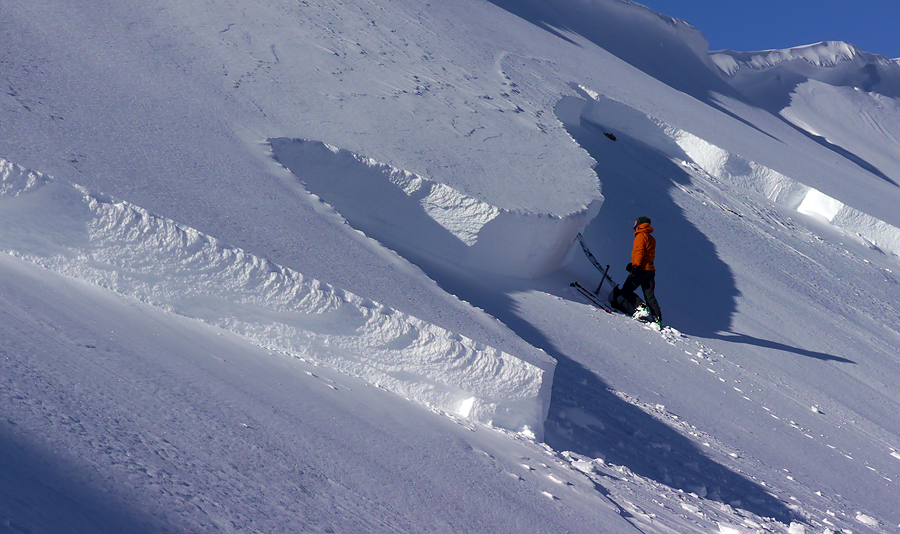Persistent Slab Avalanche Problem Persists
Avalanche Canada is saying that the pesky persistent slab avalanche problem is back in the forecast for many regions. As new snow and wind events build a thicker slab on top of a persistent weak layer, this avalanche problem may develop into a persistent slab avalanche problem. Check the forecast, know before you go!
Persistent slab avalanche problems occur when a cohesive slab forms over a buried weak layer such as surface hoar or facets. These layers are slow to bond with surrounding snow and can linger for weeks or months. Persistent slab avalanches can spread out far and wide, making them very hard to escape.
Persistent slab problems are tricky to identify and manage. If the weak layer is still relatively shallow in the snowpack, you may see signs of instability like shooting cracks and whumpfs. When it is buried deeper, those signs disappear. Pay careful attention to the forecast so you know where it exists and avoid slopes with a persistent slab problem. Be patient as the weak layer will eventually strengthen and the problem will go away.
The following film is part of Avalanche Canada’s new Avy Savvy program. Avalanche training opens up a world of possibilities. When you know more, you can go farther with confidence. Avy Savvy is designed to be a precursor to the Avalanche Canada Training program. Those of you who have taken an Avalanche Skills Training (AST) course will find this tutorial a useful refresher.
Every day through the winter, thousands enjoy the wonders of our mountainous backcountry, whether on skis, snowboard, snowmobile, or snowshoes. They experience incredible natural beauty, get great exercise, and enjoy the incomparable pleasures of powder snow.
But travelling in the winter backcountry can include the risk of avalanches. Avalanches are the deadliest natural disaster in Canada, killing more people every year than all other natural disasters combined.
Avalanches rarely strike from above without warning. More than 90% of fatal avalanche accidents are caused by the victim or someone in the victim’s party. This means learning more about avalanches—how and where they form, when they’re more likely to occur—and learning how to make consistent decisions, can help you manage this inherent risk.
Here’s what you will learn:
– How avalanches form
– How different types of avalanches are classified and why that’s important to you
– How to identify avalanche terrain
– How to use the Avalanche Terrain Exposure Scale
– How to understand the avalanche forecast and use it to plan your trips
– The daily process for a day in the backcountry
– How to perform a companion rescue in case you or someone else gets caught in an avalanche
Avy Savvy is not a substitute for taking an AST course, but it will give you a leg up when you do.











Comments